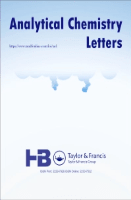
Analytical Chemistry Letters
Scope & Guideline
Catalyzing Collaboration Across Scientific Disciplines
Introduction
Aims and Scopes
- Analytical Method Development and Validation:
The journal emphasizes the creation and validation of robust analytical methods, particularly using chromatographic techniques like HPLC, UPLC, and HPTLC, to ensure accuracy and reliability in chemical analysis. - Application of Quality by Design (QbD) Principles:
A consistent focus on QbD principles is evident, aiming to enhance the reliability of analytical methods through systematic design and optimization, ensuring methods are not only effective but also efficient. - Green Chemistry and Sustainable Practices:
The journal promotes research that incorporates green chemistry principles, emphasizing eco-friendly methodologies and the development of sustainable analytical techniques. - Multidisciplinary Research:
Research published in the journal spans various fields including pharmaceuticals, environmental science, and materials science, showcasing the interdisciplinary nature of analytical chemistry. - Biological and Pharmaceutical Applications:
A significant portion of the research focuses on the pharmaceutical applications of analytical methods, including the analysis of drug formulations and the study of biological materials.
Trending and Emerging
- Eco-friendly and Sustainable Analytical Methods:
There is a significant increase in research focusing on eco-friendly and sustainable methodologies, aligning with global initiatives for environmental protection and sustainability in chemical practices. - Integration of Advanced Analytical Techniques:
Emerging trends include the integration of advanced techniques such as mass spectrometry (MS) and chromatographic methods, highlighting the importance of multi-faceted approaches in analytical chemistry. - Pharmaceutical and Biomedical Applications:
A growing emphasis on pharmaceutical and biomedical applications is evident, particularly in the development of methods for drug analysis and the study of biological samples, reflecting the importance of healthcare-related research. - Nanotechnology in Analytical Chemistry:
The incorporation of nanotechnology into analytical methods is on the rise, with research exploring the use of nanomaterials for enhanced detection and analysis capabilities. - Data-Driven Approaches and Chemometrics:
There is an increasing trend towards the use of data-driven approaches and chemometric methods to optimize analytical processes and improve the interpretation of complex data sets.
Declining or Waning
- Traditional Spectrometric Techniques:
There is a noticeable decline in the publication of papers focused solely on traditional spectrometric techniques, such as UV-Vis and basic fluorescence methods, as researchers increasingly favor more advanced and integrated analytical approaches. - Basic Environmental Analysis:
Research centered on basic environmental analysis methods, without the incorporation of advanced techniques or green chemistry principles, is becoming less common, as the field shifts toward more innovative and sustainable practices. - Single-Method Analytical Approaches:
There is a reduction in studies that rely on single-method analytical approaches, as multi-method strategies and integrated techniques become more favored for comprehensive analysis.
Similar Journals

Sustainable Chemistry and Pharmacy
Leading the Charge in Sustainable Chemical InnovationsSustainable Chemistry and Pharmacy is an esteemed journal published by ELSEVIER, positioned at the intersection of chemistry and pharmacy with a robust focus on sustainability. Operating from the Netherlands, this journal serves as a crucial platform for disseminating innovative research and advanced practices in Pharmaceutical Sciences, Environmental Chemistry, and Pollution Management. With its impressive performance, it is ranked Q1 in Pharmaceutical Science and Pollution and Q2 in both Environmental Chemistry and Management, Monitoring, Policy and Law, with significant rankings in Scopus, reflecting an influential footprint in the academic community. As an Open Access subscription-based journal with a reader-friendly policy, it aims to provide researchers, professionals, and students with access to critical insights and cutting-edge methodologies that could shape future practices and policies in sustainability. Established in 2015 and projected forward to 2024, the journal plays a pivotal role in addressing contemporary environmental challenges while fostering a bridge between chemical sciences and pharmaceutical innovation.

Analytical and Bioanalytical Chemistry Research
Empowering Global Knowledge in Chemistry.Analytical and Bioanalytical Chemistry Research is an esteemed open-access journal published by the Iranian Chemical Society, dedicated to the advancement of knowledge in the fields of analytical chemistry, biochemistry, and spectroscopy. Since its inception in 2014, this journal has provided a platform for researchers, professionals, and students to publish and access high-quality research articles that contribute to the understanding of chemical analysis and bioanalytical methods. With an ISSN of 2383-093X and an open-access model that promotes global dissemination of findings, it ensures that innovative research reaches a broad audience. The journal has consolidated its presence in the scientific community, currently ranked in quartile Q4 for analytical chemistry, biochemistry, and spectroscopy as of 2023. Its Scopus rankings, including a percentile of 34th in Analytical Chemistry, reflect its commitment to quality research and scholarly contribution. Situated in Tehran, Iran, the journal serves as a vital resource for academic discourse, offering insights into emerging trends and methodologies in analytical and bioanalytical chemistry.
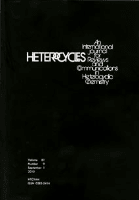
HETEROCYCLES
Bridging Gaps in Drug Discovery and DevelopmentHETEROCYCLES, published by the Japan Institute of Heterocyclic Chemistry, stands as a pivotal journal within the fields of Analytical Chemistry, Organic Chemistry, and Pharmacology. With its ISSN 0385-5414 and E-ISSN 1881-0942, HETEROCYCLES has been a respected platform for scholarly work since its establishment in 1983, featuring innovative research up until 2022. While currently not open access, the journal is renowned for its rigorous peer-review process, ensuring the dissemination of high-quality research. Despite its Q4 ranking in the 2023 quartiles for its categories, it plays a crucial role in bridging gaps in knowledge and advancing the discourse on heterocyclic compounds, which are vital in drug discovery and development. Researchers, professionals, and students who are engaged in chemistry and pharmacology will find HETEROCYCLES an essential source of cutting-edge studies, insights, and an opportunity to contribute to the evolving landscape of these scientific fields.
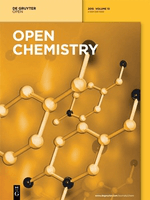
Open Chemistry
Empowering the Global Chemistry Community Through Open ResearchOpen Chemistry, published by DE GRUYTER POLAND SP Z O O, is a distinguished peer-reviewed journal that has been serving the global chemistry community since its inception. With an ISSN of 2391-5420 and an E-ISSN also of 2391-5420, this open-access journal has been accessible to researchers and practitioners alike since 2015, ensuring a wide dissemination of high-quality research findings. Located in Germany, specifically at BOGUMILA ZUGA 32A STR, 01-811 WARSAW, MAZOVIA, POLAND, Open Chemistry aims to publish innovative research across various chemical disciplines, with special attention to miscellaneous chemistry and materials chemistry. It is currently ranked in the Q3 category for both fields as of 2023, reflecting its solid standing within the academic community, with specific ranks of 187/408 in General Chemistry and 153/317 in Materials Chemistry, corresponding to respective percentiles of 54 and 51. Open Chemistry not only enhances the accessibility of cutting-edge research but also serves as a vital resource for students, professionals, and scholars seeking to advance their knowledge in the rapidly evolving landscape of chemical sciences.
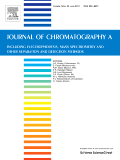
JOURNAL OF CHROMATOGRAPHY A
Unveiling Breakthroughs in BiochemistryJOURNAL OF CHROMATOGRAPHY A, published by Elsevier, is a leading journal in the disciplines of Analytical Chemistry, Biochemistry, and Organic Chemistry, boasting an impressive 2023 Q2 categorization across multiple fields. With an ISSN of 0021-9673 and an E-ISSN of 1873-3778, this prestigious journal has been at the forefront of chromatography research since its inception in 1958. The journal serves as a vital platform for disseminating high-quality research articles, reviews, and insights into the latest developments in chromatographic techniques and applications, reflecting its standing in the top tier of analytical and organic chemistry literature, evidenced by its impressive Scopus rankings. While it currently operates under a subscription model, the journal continues to make significant contributions to the scientific community by fostering collaboration and innovation in chromatography methodologies. We invite researchers, professionals, and students to engage with the essential findings shared within its pages, which are foundational for advancements in various scientific fields, making it an indispensable resource for enhancing chromatographic knowledge and practice.

Separation Science Plus
Connecting scholars to the forefront of separation innovation.Separation Science Plus is an emerging academic journal dedicated to advancing the field of analytical chemistry and separation science. Published by WILEY-VCH Verlag GmbH, this journal provides a platform for researchers to disseminate high-quality studies and reviews that address innovative techniques and breakthroughs in separation methodologies. With its ISSN 2573-1815, the journal has made significant inroads since its inception in 2018, encompassing a convergence period until 2024. Despite currently holding a Q3 ranking in Analytical Chemistry and a Q4 ranking in Filtration and Separation, its dedication to publishing impactful research makes it a vital resource for professionals and students alike. The journal operates under the robust scholarly reputation of WILEY, which is known for its commitment to excellence in scientific communication. Researchers interested in the latest advancements in separation techniques will find Separation Science Plus an essential read, fostering the exchange of knowledge and facilitating greater understanding within this specialized field.

CHINESE JOURNAL OF CHEMISTRY
Unveiling the complexities of chemistry since 1990.The CHINESE JOURNAL OF CHEMISTRY, published by WILEY-V C H VERLAG GMBH, is a distinguished peer-reviewed journal that has been contributing to the field of chemistry since its inception in 1990. With an impressive Q1 ranking in the Chemistry (miscellaneous) category and a Scopus rank of 67 out of 408, this journal is recognized for its rigorous scholarly standards and significant impact within the academic community. Renowned for publishing high-quality research, reviews, and insightful commentaries, the journal serves as a vital resource for researchers, professionals, and students keen on advancing their understanding of general chemistry and its applications. Although it does not offer open access, the journal remains an essential outlet for innovative chemistry research, attracting contributions from a global network of specialists. With its broad scope covering various aspects of chemistry and a commitment to fostering scientific dialogue, the CHINESE JOURNAL OF CHEMISTRY is poised to continue its role as a central pillar in the ever-evolving landscape of chemical sciences.

RUSSIAN JOURNAL OF GENERAL CHEMISTRY
Bridging Disciplines Through Rigorous Chemistry InsightsThe Russian Journal of General Chemistry is a prominent scholarly publication dedicated to advancing the field of general chemistry. Published by MAIK NAUKA/INTERPERIODICA/SPRINGER, this journal contributes significantly to the global chemistry landscape, offering a platform for researchers and professionals to share their latest findings and methodologies. With an ISSN of 1070-3632 and an E-ISSN of 1608-3350, it has established itself as a resource for high-quality research articles since its inception in 1996. Though currently indexed in the Q4 category for chemistry (miscellaneous) and ranking #299 out of 408 in general chemistry according to Scopus, the journal remains an important venue for academic contributions that bridge gaps in traditional chemical disciplines. Desiring to cater to a diverse range of interests within chemistry, the journal actively encourages submissions that reflect significant scientific achievements, innovations, and collaborative studies. Although the journal does not currently offer open access, its role in disseminating crucial chemical research cannot be overstated. Researchers and students alike will find valuable insights and rigorous scientific discourse in its pages.

CHEMICAL PAPERS
Illuminating Pathways in Biochemistry and Material SciencesChemical Papers is a distinguished scientific journal published by Springer International Publishing AG, catering to the fields of Biochemistry, Chemical Engineering, and Materials Chemistry. With an ISSN of 0366-6352 and an E-ISSN of 2585-7290, this journal has been a pivotal platform for the dissemination of research findings since its inception in 1973. Over the years, it has maintained a strong academic presence, as evidenced by its Q2 and Q3 rankings in several pertinent categories as of 2023, including Chemical Engineering and Industrial and Manufacturing Engineering. Although the journal is not currently Open Access, it remains an invaluable resource for researchers and professionals across its scope, promoting the advancement of knowledge in chemical sciences and fostering innovation within the industry. The publication is headquartered in Cham, Switzerland, contributing to a global dialogue on chemical research and its applications.
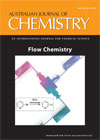
AUSTRALIAN JOURNAL OF CHEMISTRY
Advancing chemical knowledge, one article at a time.The Australian Journal of Chemistry, with an ISSN of 0004-9425 and an E-ISSN of 1445-0038, is a distinguished publication from CSIRO PUBLISHING, dedicated to advancing the field of chemistry since its inception in 1948. Based in Australia, this journal serves as a platform for original research articles, reviews, and innovative studies that encompass a wide spectrum of chemical disciplines, aiming to foster communication and collaboration among researchers globally. Despite its Q3 ranking in the Chemistry (Miscellaneous) category and standing at rank #236 in Scopus’ general chemistry classification, it remains an essential resource for professionals and students seeking to stay informed about emerging trends and discoveries in chemistry. The journal does not offer open access, emphasizing the premium quality of peer-reviewed content that adheres to rigorous academic standards. By bridging theory and practice, the Australian Journal of Chemistry continues to play a crucial role in shaping the future of chemical sciences.